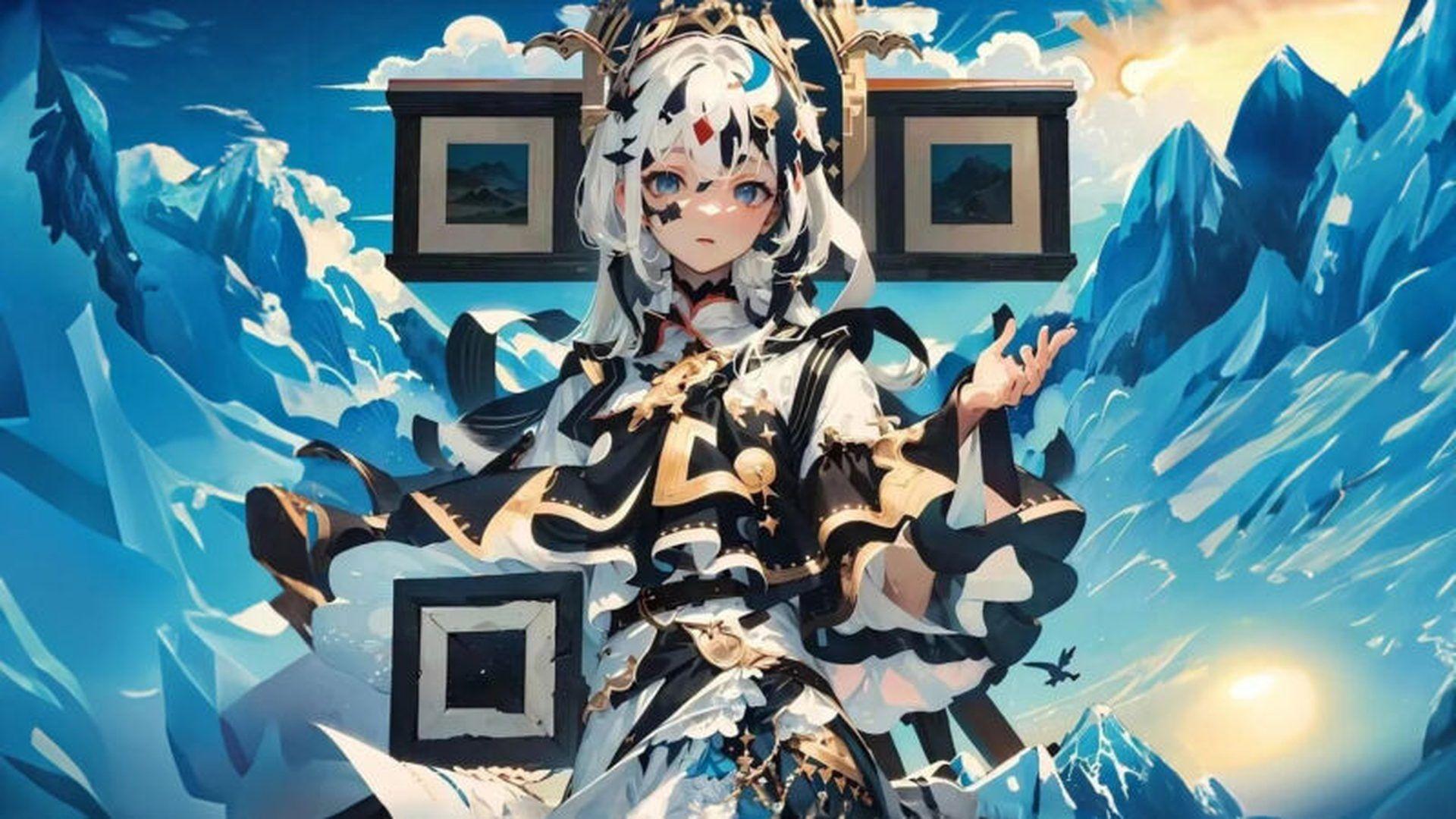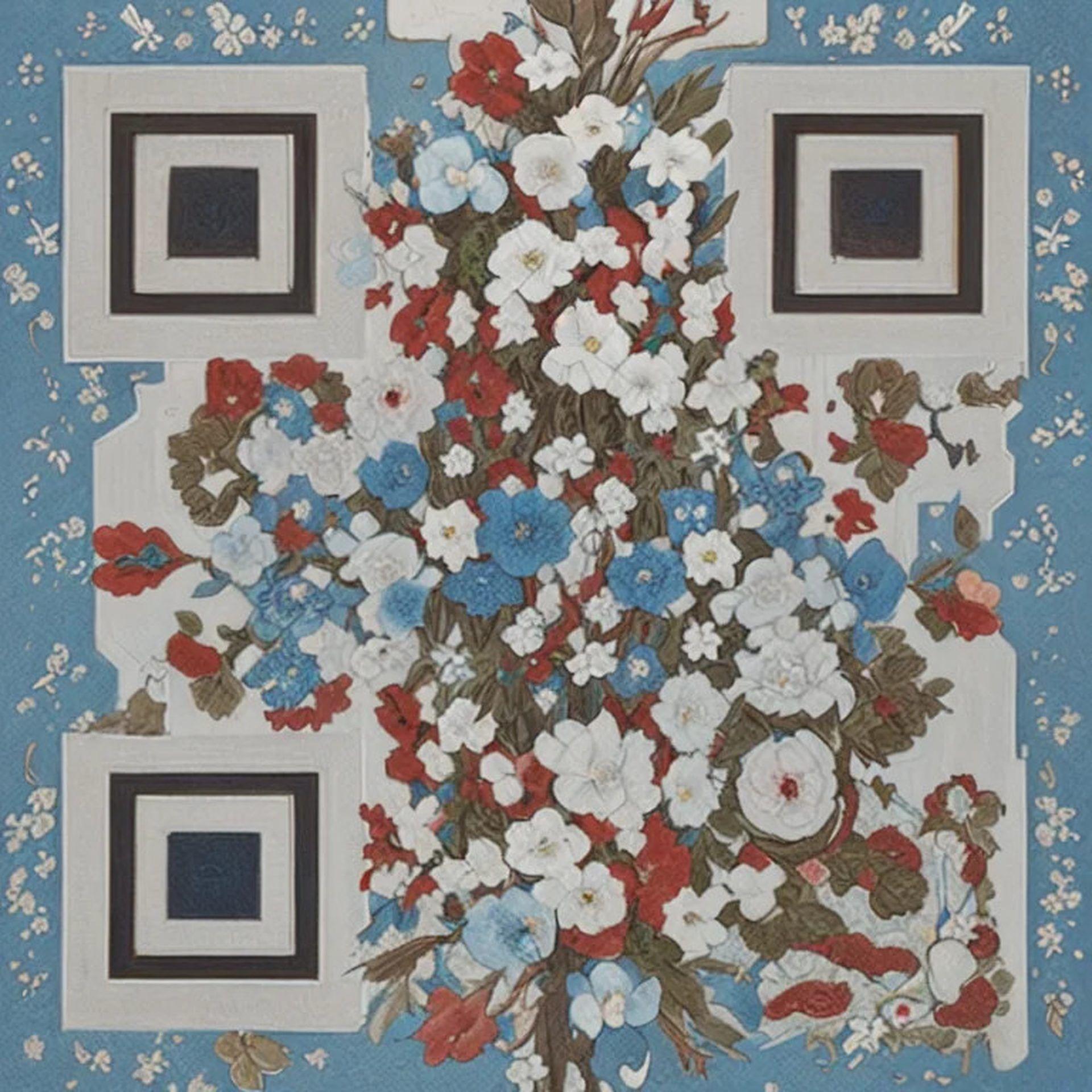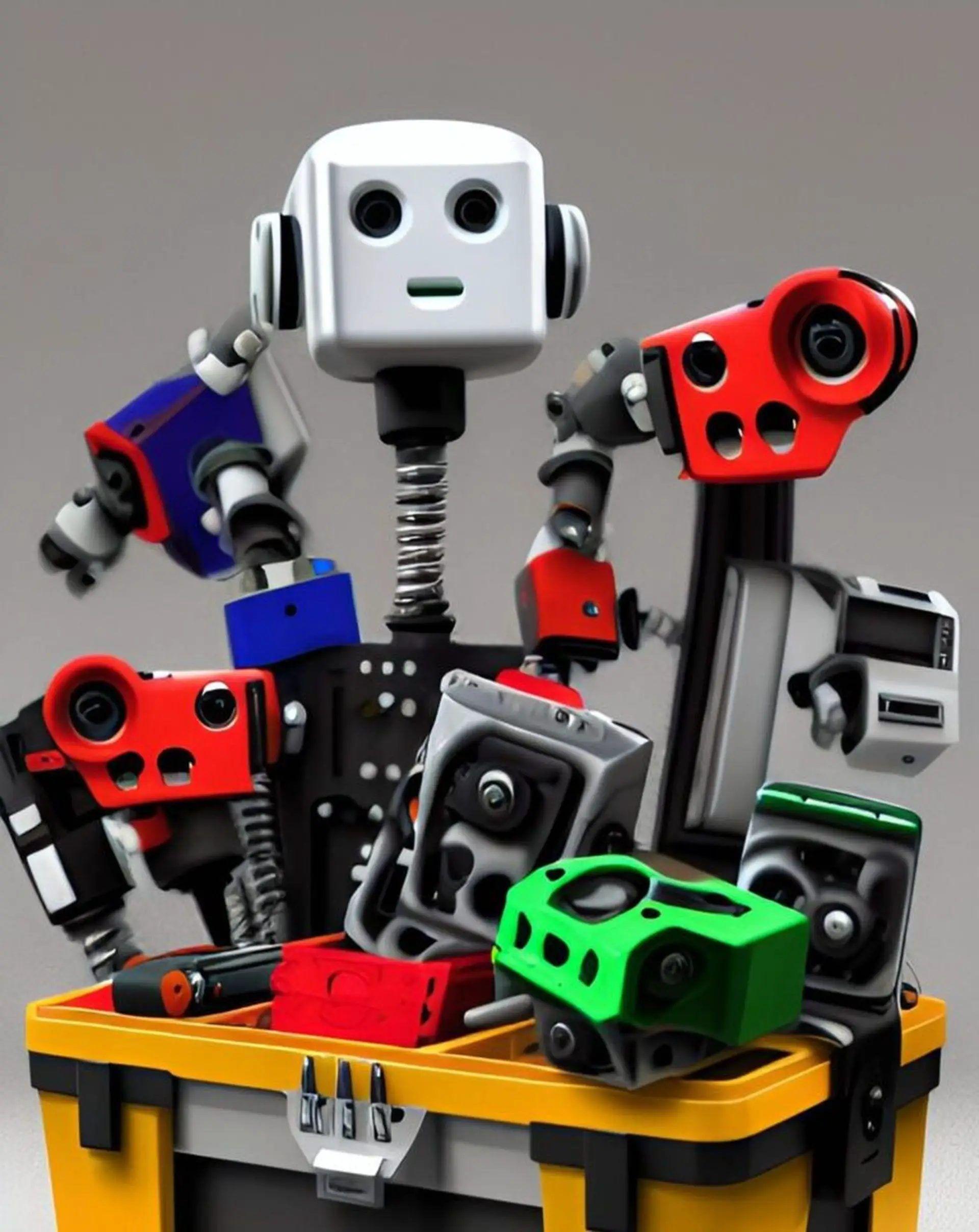If you want to learn how to make AI QR code art and join the latest trend, congratulations, you came to the right place! Throughout this guide, we will provide you with step-by-step instructions on how to create your own AI QR code art using Stable Diffusion ControlNet. Whether you’re an artist looking to experiment with new forms of expression or a tech enthusiast eager to push the boundaries of AI, this tutorial will empower you to unlock the immense potential of QR codes as a medium for artistic exploration.
In today’s interconnected world, QR codes have become ubiquitous, enabling instant access to information and bridging the physical and digital realms. However, what if we told you that QR codes can transcend their utilitarian purpose and transform into mesmerizing works of art? Thanks to the remarkable advancements in artificial intelligence (AI), we now have the means to turn QR codes into visually stunning masterpieces.
3. Flowers pic.twitter.com/O0xvkmW3MZ
— AI Daily (@AIDailyNewsNow) June 8, 2023
Get ready to embark on a journey that merges the realms of technology and artistry, where QR codes transcend their functional limitations and become the building blocks of captivating visual experiences. Let’s dive in and discover the fascinating world of AI QR code art, where innovation and creativity converge to push the boundaries of what’s possible.
What is AI QR code art?
AI QR code art is a growing trend. Artificial intelligence models trained on a large collection of photographs generate these QR codes. Patterns and characteristics in the images are taught to the models, which they utilize to inform the production of new images. The end product is a visually appealing and very practical variant of the QR code. The Quick Response (QR) code links to a specific webpage, video, or other media file when scanned. However, the QR code itself is also a work of art.

In a world saturated with digital content, it’s crucial to find innovative ways to capture attention and engage audiences. AI QR code art offers a fresh and captivating approach to enhancing the visual appeal and functionality of QR codes, serving as a bridge between technology and aesthetics. Here are a few benefits of why AI QR code art is so loved:
- Enhancing brand identity: Traditional QR codes often lack visual appeal, making it challenging for businesses to incorporate them seamlessly into their branding efforts. AI QR code art allows companies to infuse their unique brand elements, colors, and design motifs into QR codes, aligning them with their overall brand identity and creating a more cohesive and visually engaging experience for customers.
- Fostering creativity: QR codes have typically been associated with their practical use cases, such as linking to websites or providing product information. By transforming QR codes into artistic creations, AI QR code art empowers individuals and artists to explore new realms of creativity, enabling the fusion of technology and artistic expression in novel and exciting ways.
- Increasing engagement: Aesthetically pleasing QR codes are more likely to capture attention and encourage users to scan them. By incorporating visual elements and artistic flair, AI QR code art piques curiosity, enticing users to explore and interact with the code, ultimately increasing engagement and interaction rates.
- Contextualizing information: AI QR code art provides an opportunity to embed QR codes within visually appealing compositions that contextualize the information they convey. By integrating QR codes into artistic designs, you can create a cohesive visual narrative or tell a story, making the scanning experience more immersive and memorable for users.
- Opening new marketing avenues: AI QR code art opens up exciting possibilities for innovative marketing campaigns. Brands can leverage the artistic and visual appeal of QR codes to create interactive experiences, gamified content, or even augmented reality (AR) activations. This not only differentiates their marketing efforts but also adds an element of intrigue and surprise for consumers.
By exploring the realm of AI QR code art, we can transcend the traditional limitations of QR codes and unlock their true potential as captivating and functional artistic expressions.

Here are some examples of AI QR code art:
- An AI QR code art that is a portrait of a famous person: When scanned, the QR code takes you to a website with more information about the person.
- An AI QR code art that is a landscape of a beautiful place: When scanned, the QR code takes you to a video of the place.
- An AI QR code art that is an abstract painting: When scanned, the QR code takes you to a website where you can buy prints of the painting.
AI QR code art may be made in several ways. Multiple AI models are at your disposal, and your QR code’s visual style is fully up to you. With some ingenuity and technological know-how, you can make one-of-a-kind works of art using QR codes. However, in this guide, we will explore how to use Stable Diffusion ControlNet for QR code Art.
Learn how to use Stable Diffusion ControlNet
How to make AI QR code art using Stable Diffusion ControlNet
To make AI QR code art using Stable Diffusion ControlNet, you will need to follow these steps:
- Generate a QR code. You can use a QR code generator to generate a QR code with the text or URL that you want to include in your art.
- Save the QR code as a PNG file.
- Download the Stable Diffusion ControlNet model. You can download the model from the Stable Diffusion website.
- Install the Stable Diffusion ControlNet software. You can install the software from the Stable Diffusion website.
- Open the Stable Diffusion ControlNet software.
- Import the QR code image into the software.
- Set the parameters for the image generation. You can adjust the parameters to control the style and complexity of the image.
- Generate the image.
- Save the image.
Your AI QR code art is now complete! You can share it with others or use it for your own purposes.

Do you need a detailed explanation? Now that we have a grasp of Stable Diffusion ControlNet, let’s delve into the step-by-step process of creating your own AI QR code art. We will cover everything from selecting a QR code generator to training the model and producing stunning visual compositions that seamlessly integrate QR codes with artistic flair.
- Choosing a QR code generator: The first step involves selecting a QR code generator that provides flexibility in customizing the design. Look for a generator that allows you to adjust the shape, size, and error correction level of the QR code while ensuring it remains scannable.
- Gathering training data: To train the Stable Diffusion ControlNet model effectively, you’ll need a diverse dataset of QR codes and visually appealing artwork. Collect QR codes from different sources and curate a collection of artistic images that align with your desired aesthetic.
- Preparing the dataset: Preprocess the QR code and artwork dataset to ensure compatibility. You may need to resize, crop, or enhance the images to optimize their suitability for training.
- Training the model: Utilize the Stable Diffusion ControlNet framework to train the model using the prepared dataset. This process involves feeding the QR code and artwork pairs into the model and iteratively adjusting the parameters to optimize the output quality.
- Generating AI QR Code Art: Once the model is trained, you can start generating AI QR code art. Experiment with different input combinations, explore various artistic styles and adjust the model’s parameters to achieve the desired results.
Some tips for creating AI QR code art:
- Use a high-quality QR code generator: This will ensure that your QR code is readable by scanners.
- Save the QR code as a PNG file: This will ensure that the QR code is compatible with the Stable Diffusion ControlNet software.
- Experiment with the parameters for image generation: This will allow you to create different styles of AI QR code art.
- Be patient: The Stable Diffusion ControlNet model can take some time to generate an image.
Oh, are you new to AI, and everything seems too complicated? Keep reading…
AI 101
You can still get on the AI train! We have created a detailed AI glossary for the most commonly used artificial intelligence terms and explain the basics of artificial intelligence as well as the risks and benefits of AI. Feel free the use them. Learning how to use AI is a game changer! AI models will change the world.
In the next part, you can find the best AI tools to use to create AI-generated content and more.

AI tools we have reviewed
Almost every day, a new tool, model, or feature pops up and changes our lives, and we have already reviewed some of the best ones:
- Text-to-text AI tools
Do you want to learn how to use ChatGPT effectively? We have some tips and tricks for you without switching to ChatGPT Plus, like how to upload PDF to ChatGPT! However, When you want to use the AI tool, you can get errors like “ChatGPT is at capacity right now” and “too many requests in 1-hour try again later”. Yes, they are really annoying errors, but don’t worry; we know how to fix them. Is ChatGPT plagiarism free? It is a hard question to find a single answer. If you are afraid of plagiarism, feel free to use AI plagiarism checkers. Also, you can check other AI chatbots and AI essay writers for better results.
- Text-to-image AI tools
- MyHeritage AI Time Machine
- Reface app
- Dawn AI
- Lensa AI
- Meitu AI Art
- Stable Diffusion
- DALL-E 2
- Google Muse AI
- Artbreeder AI
- Midjourney
- DreamBooth AI
- Wombo Dream
- NightCafe AI
- QQ Different Dimension Me
- Random face generators
- Visual ChatGPT
- Adobe Firefly AI
- Leonardo AI
- Hotpot AI
- DragGAN AI photo editor
- Freepik AI
- 3DFY.ai
- Photoleap
While there are still some debates about artificial intelligence-generated images, people are still looking for the best AI art generators. Will AI replace designers? Keep reading and find out.
- AI video tools
- AI presentation tools
- AI search engines
- AI interior design tools
- Other AI tools
Meet Instagram AI chatbot: Soon, you will get advice from Instagram’s 30 different personalities
Do you want to explore more tools? Check out the bests of:






